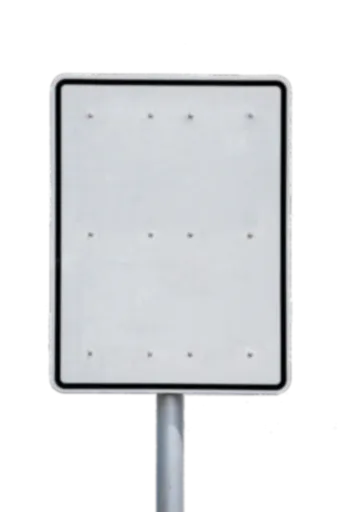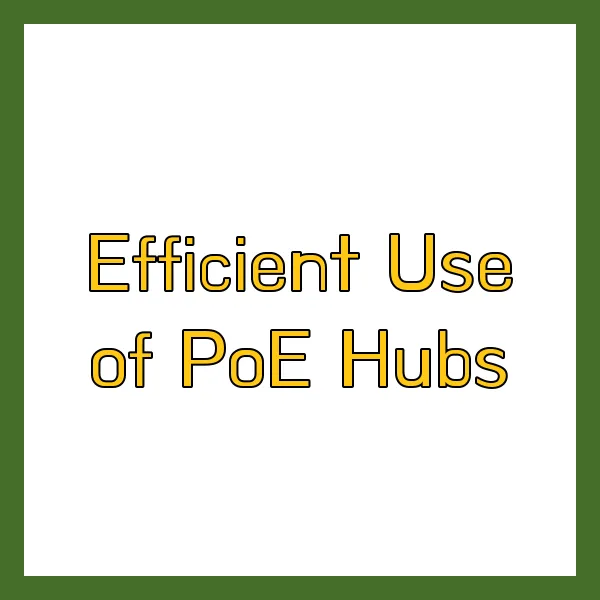
Power over Ethernet , commonly known as PoE , revolutionizes the way we supply power to devices over network cables. This technological advancement eliminates the need for separate power supplies, thereby streamlining installations and enhancing efficiency . Understanding the nuances between PoE , PoE+ , and PoE++ can significantly impact your deployment strategy. Each version offers unique features and advantages designed to cater to various power requirements. Furthermore, learning the effective utilization of a PoE hub can maximize your network's potential and ensure seamless connectivity . In this article, we will delve deep into these critical aspects, providing you with the insights needed to make informed decisions in your network implementations.
Understanding the Basic Principles of PoE

Power over Ethernet (PoE) is a technology that enables the transmission of both data and electrical power through standard Ethernet cables, such as Cat5e and Cat6. This innovative technique fundamentally reshapes the way networks are powered and managed. PoE operates under the IEEE 802.3 standards, which define how electrical power can be delivered over Ethernet connections, allowing devices like IP cameras , VoIP phones , and wireless access points to receive power without the need for additional power adapters.
Core Principles of PoE
At its core, PoE combines power and data delivery into a single cable, simplifying installations and reducing the clutter of power cords and outlets. The principle behind PoE is relatively straightforward: a PoE-enabled switch or injector supplies power to the connected device (known as a powered device , or PD ) over the unused pairs in the Ethernet cable, which are normally reserved for data transmission. This occurs using a process known as phantom power , where the power is injected onto the wire in a way that it does not interfere with data transmission.
Power Delivery Capacities
The efficiency of PoE can be quantified. For instance, a standard PoE device can supply up to 15.4 watts of power per port, while PoE+ , defined under IEEE 802.3at , can deliver up to 30 watts . With the advancements in technology, PoE++ (IEEE 802.3bt) takes it a step further, allowing up to 60 or even 90 watts to be supplied to devices. This increased power capacity allows for more demanding applications like pan-tilt-zoom cameras and multi-channel wireless access points , making PoE a versatile solution for modern networking needs.
Key Components of PoE
One of the key components involved in implementing PoE is the power sourcing equipment (PSE) , which can either be a PoE switch or a PoE injector. A PSE sends power to the powered device while performing a power classification process to detect how much power the PD requires, ensuring optimal power supply without exceeding limits. This is vital for preventing overheating and potential damage to devices.
Implications of Using PoE
The implications of using PoE are profound. By utilizing existing LAN infrastructure, organizations can significantly reduce installation costs and time. Maintenance becomes easier as well, since fewer power sources mean less potential points of failure. Additionally , since PoE installations do not rely on AC power outlets, devices can be installed in locations that may not have easy access to power, including ceilings and outdoor spaces.
Energy Efficiency and Sustainability
More importantly, PoE promotes energy efficiency and sustainability. Since power can be managed centrally through PoE switches, it allows more granular control over energy consumption, enabling businesses to reduce their carbon footprint . Moreover, the ability to reboot devices remotely through PoE can result in significant downtime reductions, a boon for businesses that rely on uptime for their operations.
Overall, understanding the fundamental principles of PoE not only highlights its operational advantages but also showcases its transformative impact on contemporary networking practices. Businesses are increasingly looking to integrate PoE technology into their infrastructures, recognizing that the simplicity it offers can lead to substantial long-term benefits.



PoE와 PoE+의 차이점

Power over Ethernet (PoE) 기술은 유선 네트워크를 통해 전력을 공급하는 혁신적인 방식 으로, 장치 설치의 편리함을 극대화 합니다. 기본적으로 PoE는 최대 15.4W의 전력을 지원합니다. 이는 802.3af 표준에 의해 규정된 수치 로, 주로 IP 카메라, 무선 액세스 포인트, VoIP 전화기 등에 사용됩니다. 이러한 전원 공급 방식은 특수한 전원 배선 없이도 데이터와 전력을 한 번에 전송 할 수 있는 장점이 있습니다.
PoE+ 기술의 특징
반면, PoE+ 기술은 802.3at 표준을 따르며, 최대 30W의 전력을 제공합니다. 이는 PoE에 비해 두 배 이상의 전력을 지원 하는 셈입니다. 이를 통해 더 많은 전력을 필요로 하는 장치를 연결할 수 있으며, 예를 들어 팬이나 열선 조명을 포함한 IP 카메라와 같은 보다 고성능 장치에 적합 합니다. PoE+는 향상된 전력 전송 기능 덕분에 데이터 전송 속도와 안정성에도 긍정적인 영향을 미칩니다.
네트워크 인프라의 효율성
또한, PoE+는 PoE와 함께 동일한 네트워크 인프라를 사용 하므로 효율적인 네트워크 설계 가 가능합니다. 기존의 PoE 장치를 그대로 사용할 수 있으면서도, 새로운 PoE+ 장치도 설치할 수 있는 유연성 을 제공합니다. 이로 인해 사용자는 장치의 필요에 따라 포트를 선택할 수 있으며, 향상된 전력 요구 를 충족시키는 동시에 공사 비용을 절감할 수 있습니다.
대규모 네트워크 환경에서의 이점
특히, PoE와 PoE+의 효율성은 대규모 네트워크 환경에서 더욱 두드러집니다. 기업의 IT 네트워크 환경에서 PoE+ 를 사용하여 고성능의 통신 및 전력 요구를 맞출 수 있으므로, 네트워크 가용성과 안정성을 높일 수 있게 됩니다. 그 결과, 유지 관리 비용도 절감 할 수 있는 우수한 장점이 있습니다.
장비 선택 및 네트워크 설계의 중요성
아울러, PoE와 PoE+의 차이점을 명확히 이해하는 것은 장비 선택 및 네트워크 설계에 있어 매우 중요한 결정을 내리는 데 도움이 됩니다. 필요한 전력 요구를 정확히 파악하여, 적절한 기술을 선택함으로써 네트워크의 성능을 향상 시킬 수 있습니다! 이러한 이유로 사용자들은 PoE와 PoE+의 차이를 파악하는 것이 필수적입니다. 각 기술의 특성을 이해하고 비즈니스의 요구 사항에 맞춰 최적의 선택을 할 수 있도록 해야 합니다.
요약하자면, PoE와 PoE+의 차이는 주로 지원하는 전력의 양과 장치 유형 에 따라 구분됩니다. PoE는 가벼운 기기들에 적합하며, PoE+는 보다 높은 전력이 요구되는 고성능 기기에 적합합니다. 이러한 차이를 인식하고 적절한 전력 공급 방식과 네트워크 설계 를 고려하여, 더 나은 기술적 결정을 내릴 수 있습니다.



PoE++의 특징과 이점

Power over Ethernet (PoE) 기술의 발전은 빠르게 이루어지고 있으며, 그 중 PoE++ 는 특히 주목받고 있습니다. PoE++ 는 802.3bt 표준에 기반하여 개발된 기술로, PoE 와 PoE+ 보다 훨씬 더 높은 전력을 제공합니다. 이 기술은 최대 60W 또는 100W 의 전력을 지원하며, 이는 대규모 IoT 장치 및 고급 카메라와 같은 전력 소모가 큰 장치에 적합합니다.
PoE++의 주요 특징
가장 큰 특징 중 하나는 PoE++ 가 추가적인 전력 전송을 지원하여 데이터와 전력을 동시에 전송할 수 있다는 점입니다. 따라서, 설치해야 할 전선의 수를 줄이고 , 전체적인 비용을 절감할 수 있는 장점이 있습니다. 이는 특히 사무실, 기관, 그리고 다양한 설치 환경에서 중요한 요소이며, 전원과 데이터 인프라를 통합하여 효율성을 극대화합니다.
설치 유연성과 스마트 환경 지원
PoE++ 의 또 다른 이점으로는 설치의 유연성 이 있습니다. 기존의 전선 인프라를 활용하여 새로운 장비를 갖추기 때문에, 추가적인 전력 소스나 전원 콘센트를 설치하는 번거로움 없이 신속하게 작업을 수행할 수 있습니다. 이 기술은 Smart Building 및 IoT 환경에서의 적용을 극대화 하고 있으며, 센서, 카메라, 무선 액세스 포인트와 같은 장치들의 동작을 활성화하는 데 필요한 전력을 안정적으로 제공하는 데 큰 역할을 하고 있습니다.
전력 전송 방식의 진화
PoE++ 의 발전과 함께, 전력 전송 방식은 매우 진화했습니다. 예를 들어, Ultradry Sites 는 최대 100W의 전력을 제공할 수 있는 멀티 포트 인프라 구조 를 통해 동시에 여러 장치를 지원합니다. 이러한 인프라는 운영 비용의 절감과 함께, 설치 작업의 간소화를 추구하는 기업에 대한 매력적인 솔루션으로 떠오르고 있습니다.
에너지 효율성과 지속 가능성
추가로, PoE++ 는 에너지 효율성을 고려하여 설계되었습니다. 이 기술은 장치의 전력을 자동으로 조절하여 필요할 때만 전력을 공급함으로써 에너지 낭비를 최소화합니다. 이는 기업의 운영 비용을 줄이고, 지속 가능한 에너지 관리 시스템 을 구축하는 데 기여합니다.
미래 가능성과 기술 혁신
또한, PoE++ 는 향후 기술 발전에 완벽하게 적응하도록 설계되어 있습니다. 장기적으로 IoT 와 AI 기술의 발전 에 발맞추어, 더욱 다양한 장치들이 PoE++ 를 통해 연결될 수 있는 가능성은 무궁무진합니다. 이러한 전망 속에서 PoE++ 는 기술적 혁신을 이끄는 중요한 역할을 할 것으로 기대됩니다.
결론적으로, PoE++ 는 효율성과 유연성을 기반으로 한 혁신적인 기술로, 복잡하고 다양한 장치들이 연결되는 현대의 네트워크 환경 에서 필수적인 요소로 자리 잡고 있습니다. 이 기술은 전체적인 시스템의 신뢰성을 높이고, 설치 비용을 절감하며, 에너지 효율성을 극대화하는 데 많은 기여 를 하고 있습니다. PoE++ 의 도입은 앞으로의 스마트 네트워크 구축 및 IoT 장치의 확산에 중요한 발판이 될 것입니다.



Efficient Use of PoE Hubs

To harness the full potential of Power over Ethernet (PoE) technology, an efficient deployment of PoE hubs is imperative! Understanding how to optimally utilize these hubs can significantly enhance network performance, reduce installation costs, and improve energy management. With PoE hubs, devices can receive both power and data through a single cable— simplifying setup and reducing cable clutter.
Understanding PoE Classes
First and foremost, it's essential to recognize the different classes of PoE. With IEEE standards defining PoE (IEEE 802.3af), PoE+ (IEEE 802.3at), and PoE++ (IEEE 802.3bt), understanding power delivery capabilities is crucial. A basic PoE hub delivers up to 15.4 watts per port, PoE+ increases that to about 30 watts, and PoE++ can provide as much as 60 watts or even up to 100 watts! This increased power is particularly advantageous for devices such as PTZ cameras, VoIP phones, and wireless access points that demand higher power consumption.
Power Budget Considerations
When selecting a PoE hub, one must pay close attention to the total power budget . For instance, if a hub has a power budget of 120 watts and accommodates 8 ports, then each port would ideally handle approximately 15 watts. However, it is vital to consider dynamic power management . Some PoE hubs can intelligently deliver power based on real-time needs, optimizing overall efficiency while minimizing waste.
Placement and Cabling
Proper placement and managed cabling of PoE hubs can also lead to significant performance improvements. Traditionally, PoE hubs are housed in network rooms; however, placing them closer to the powered devices can mitigate signal degradation and improve power efficiency. In terms of cabling, using high-quality Ethernet cables, preferably Cat 5e or Cat 6, ensures that the maximum distance of 100 meters, as stipulated by the standards, is achieved without loss of power or connectivity.
VLAN Implementation
Moreover, implementing VLANs (Virtual Local Area Networks) with PoE hubs can enhance security and management , especially in larger networks. By segmenting network traffic, administrators can optimize performance and manage bandwidth more effectively. Pairing these VLANs with Quality of Service (QoS) protocols ensures that critical applications, such as voice and video, have priority over less critical services.
Monitoring and Maintenance
Monitoring and maintenance of PoE hubs are key to prolonged operational efficiency . Utilizing network monitoring tools that provide insights into power consumption and port status enables administrators to proactively identify issues. For example, if a specific port is consuming unusually high power, it may indicate a malfunctioning device. By addressing such concerns early, one can prevent network downtime and ensure a seamless user experience.
UPS Integration
Lastly, the integration of uninterruptible power supplies (UPS) with PoE hubs is a strategic measure to enhance reliability. In the event of a power failure, maintaining operational continuity for connected devices becomes essential—especially in critical applications like surveillance systems. Choosing a UPS designed for PoE systems will facilitate this while ensuring that power is delivered effectively and without delay.
Efficiently utilizing PoE hubs is not merely a matter of connectivity; it’s about creating a resilient, scalable, and energy-efficient network. Adhering to the standards, optimizing placement, and employing monitoring tools and redundancy measures will ensure that you maximize the capabilities of your PoE infrastructure! The importance of these strategies cannot be overstated in a world increasingly dependent on uninterrupted network access and sustainable technology solutions.
In conclusion , understanding PoE technology and its variants, PoE+ and PoE++ , is essential for anyone looking to enhance their network installations . These advancements provide not only efficiency but also flexibility in power distribution —crucial for modern connectivity needs. By leveraging PoE hubs effectively, users can optimize their network infrastructure while minimizing clutter and ensuring reliability. Familiarity with these systems empowers decision-makers to make informed choices , leading to more robust and future-proof setups. As the demand for power and data integration continues to rise, mastering PoE will undoubtedly provide a competitive edge .


